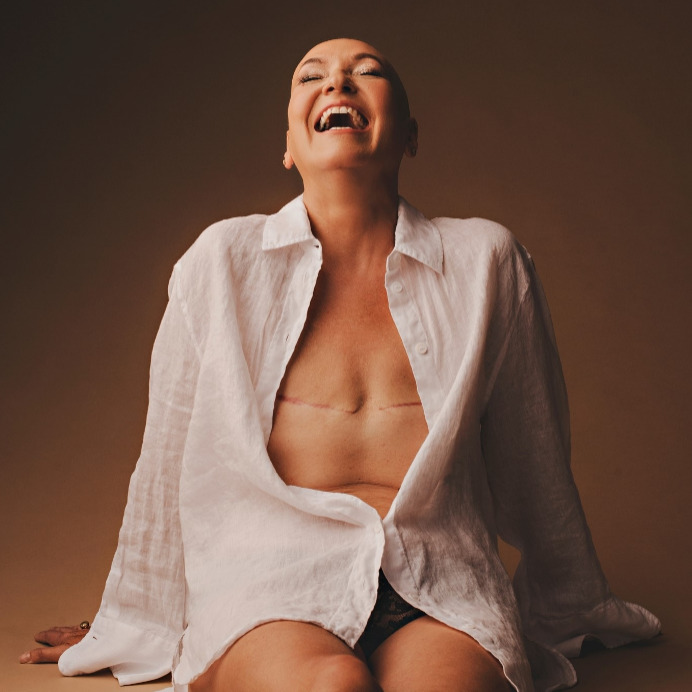 by Ellyn Winters-Robinson
by Ellyn Winters-Robinson
This year 28,000 women in Canada will be diagnosed with breast cancer. On March 10, 2022, I became one of those women. Disturbingly, within a month of my diagnosis, two more of my close friends received their breast cancer diagnoses. In total, I have 15 close friends and counting who are either breast cancer survivors, or who are currently battling breast cancer. This silent epidemic seems to be growing at an extraordinary pace.
While my cancer -- three tumours in total, the largest at 4.5 centimetres -- was isolated to my left breast, I opted to have a double mastectomy. I also decided quickly that I would move forward with aesthetic flat closure (AFC) reconstruction versus breast mound reconstruction. My mastectomy was my first surgery. I wanted it to be my last, and I had little appetite for the long and difficult process of breast mound reconstruction.
As a relatively slim woman, I was not a candidate for the Diep Flap procedure, where tissue is taken from the abdomen. The alternative Latissimus Dorsi Flap procedure, where the lat muscle is used to replace breast tissue, quite frankly, horrified me. Physical fitness is a large part of my existence. I simply couldn’t risk losing part of my back, my strength and limitations to my physical mobility.
AFC is a relatively new medical term that’s used to describe an approach to doing a mastectomy when breast reconstruction is not being performed. The goal of aesthetic flat closure is to have the chest contour be smooth after the mastectomy, without folds of skin or hollowed out areas, is growing in popularity among women facing a mastectomy; however, it is still not widely talked about or readily proposed as an option by surgeons. I heard about AFC from a friend who is a breast cancer survivor and raised the possibility with my surgeon. I liked that AFC is less invasive for the patient, is often a one-and-done surgery, and when performed by a skillful surgical hand, gives the patient a very smooth and perfectly flat chest.
The women I’ve spoken to who are fellow “flatties” express no regrets about their decision. This is backed up by research that indicates that the majority of women who opt for AFC are pleased with their outcomes. I don’t miss my D-cups, and I quickly adjusted to my new streamlined physique. I haven’t discarded an article of clothing. In fact, I have become more experimental with my fashion choices.
I don’t seek to convince any woman that flat is the way to go. It was the right option for me, but that said, the decision about reconstruction is a personal choice and no woman should feel judged or ashamed about her body and her choice. God knows, women who have experienced breast cancer go through enough as it is.
I do hope, however, that the day will come when AFC is automatically proposed alongside implants and Diep flap as a third reconstruction option. I have spoken to far too many women who simply were not made aware that an aesthetically pleasing flat chest after a mastectomy is even an option available to them.
Ellyn is the author of Flat Please, and co-creator of AskEllyn, the world’s first conversational AI for those on the breast cancer journey.
Photo by One for the Wall Photography






